Take a turn learning about a historic timesaver, and discover a recipe for a unique, Thanksgiving-worthy treat.
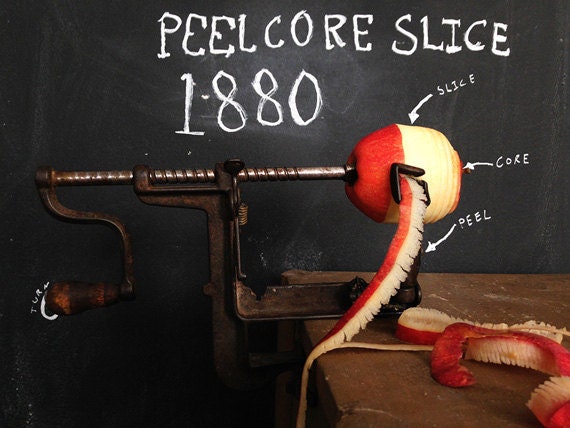
Sarah Lohman is a historic gastronomist. She recreates historic recipes as a way to make a personal connection with times gone by, as well as to inspire her contemporary cooking. You can follow her adventures on her blog, Four Pounds Flour. In this series, Lohman combs Etsy for items that speak to America’s culinary past. On the day we now know as “the First Thanksgiving,” there was not a single pie. The Puritans had no dairy to make butter, and little (if any) wheat flour for the crust. Sugar was equally rare, and although there were pumpkins, apples are European and had yet to make their way to New England. That finale food that any American today would consider indispensable to a Thanksgiving celebration did not exist at Plymouth.
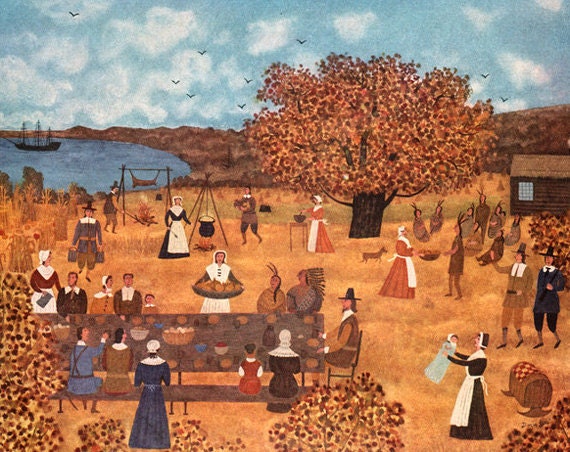 %3Cp%3E%3Ca%20href%3D%22https%3A%2F%2Fwww.etsy.com%2Fshop%2FVividiom%22%3EVividiom%3C%2Fa%3E%3C%2Fp%3E
%3Cp%3E%3Ca%20href%3D%22https%3A%2F%2Fwww.etsy.com%2Fshop%2FVividiom%22%3EVividiom%3C%2Fa%3E%3C%2Fp%3EIt took a few more years of settlement for colonists to assemble the ingredients needed to make their beloved European treat. One of the earliest recipes known for an American pie comes from a Boston manuscript: “Mrs. Gardiner’s Receipts, 1763” is handwritten in dark ink across a worn green cover. Amidst the lady’s recipe collection is one she calls a pumpkin pie, but could equally be named apple pie. “Pare a Pumpkin, and take the seedy part of it out; then cut it in slices; Pare and core a quarter of an hundred apples, and cut them in slices. Make some good paste with an Egg, and lay some all around the brim of the Dish; lay half of a pound of good, clean Sugar over the bottom of your dish, over that a Layer of apples; then a Layer of Pumpkin, and again &c until the pie is full, observing to put Sugar between every two Layers, and all the remaining Sugar on the Top. Bake it half an hour, and before you send it to the Table, cut it open and put in some good fresh butter.” Mrs. Gardiner’s recipe is typical of the time period, and it’s more beautiful prose than practical recipe: why “a quarter of an hundred apples” and not just 25? And just who was peeling those 25 apples? In early America, apple peeling was one of those laborious tasks that called for a party. Neighbors would get together to peel apples for preserves, pies, and cider. During the work there would typically be some canoodling amongst the young people, and later there was usually dancing and food. It made a boring, repetitive task more entertaining.
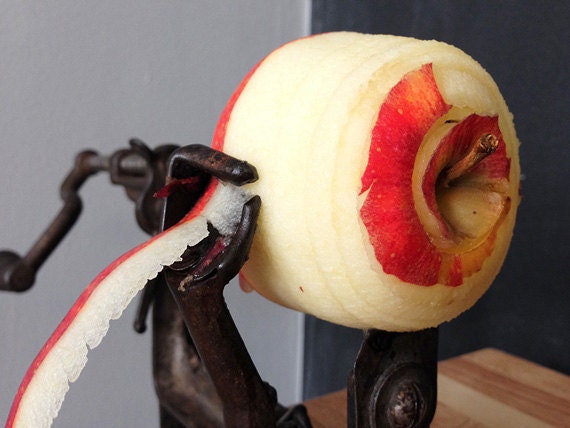 %3Cp%3E%3Ca%20href%3D%22http%3A%2F%2Fwww.fourpoundsflour.com%2F%22%20target%3D%22_blank%22%3ESarah%20Lohman%3C%2Fa%3E%3C%2Fp%3E
%3Cp%3E%3Ca%20href%3D%22http%3A%2F%2Fwww.fourpoundsflour.com%2F%22%20target%3D%22_blank%22%3ESarah%20Lohman%3C%2Fa%3E%3C%2Fp%3EI've never minded paring apples by hand, but it is time consuming. As opposed to fiddlin' or courtin', I usually binge watch TV shows or catch up on NPR while spraying the counter and floor in a sticky snowfall of peels and seeds. But this holiday season, I’ve added a tool to my kitchen arsenal that will make my share of the pie baking so much easier: a mechanical apple peeler-slicer-corer. When I sent my first fruit through the cranks and blades of my cast-iron peeler, it blew my mind.
I wish I could call this tool new or revolutionary, but mine was patented in the 1880s — 100 years too late for poor Mrs. Gardiner. The first patent for this labor-saving device was issued to D. H. Goodell in 1867. The important part of his design was the spring-mounted blade that allowed a cutting arm to gently glide across the surface of the apple, following its curves; my apples were prepared in a matter of minutes. I am always amazed by technology that is not only still functioning after a century, but is still practical and relevant.
I made Mrs. Gardiner’s recipe as written, with no additional seasonings (although I’ve suggested a few in the recipe below). I did use dark brown sugar, although a lady of Mrs. Gardiner’s standing would have used white. The finished pie had all kinds of caramelized sugar and molasses qualities as a result, giving it a taste somewhere between sweet potato casserole and apple crisp. It’s an excellent addition to your Thanksgiving feast as is, but there is also room for adventurous bakers to play with texture and flavor.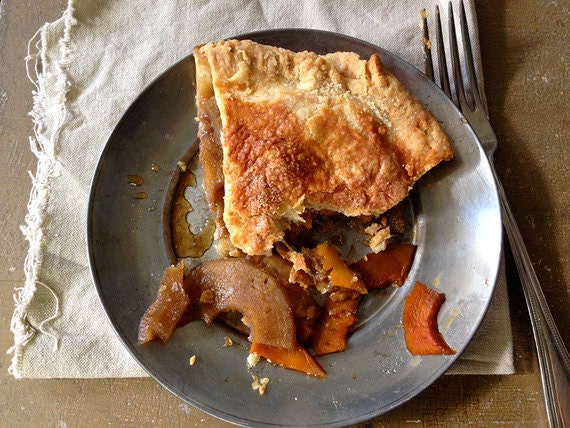 %3Cp%3E%3Ca%20href%3D%22http%3A%2F%2Fwww.fourpoundsflour.com%2F%22%20target%3D%22_blank%22%3ESarah%20Lohman%3C%2Fa%3E%3C%2Fp%3E
%3Cp%3E%3Ca%20href%3D%22http%3A%2F%2Fwww.fourpoundsflour.com%2F%22%20target%3D%22_blank%22%3ESarah%20Lohman%3C%2Fa%3E%3C%2Fp%3EMrs. Gardiner’s Apple and Pumpkin Pie Gardiner’s recipe is great for a deep-dish pie, but I’ve halved the quantities for the shallower red and white enamelware tin pie pan I have in my culinary collection. Pie pumpkins are smaller, sweet pumpkins that are usually labeled as such. 1 pie pumpkin, skinned, seeded, and thinly sliced 12 small or 6 medium baking apples, pared, cored and thinly sliced 2 cups lightly packed brown sugar Pie dough, rolled out into two crusts 2 tablespoons unsalted butter Seasonings, to taste: 2 teaspoons mixed baking spices, such as cinnamon, nutmeg, etc. 1 tablespoon rosewater ¼ cup white wine Preheat oven to 375? Fahrenheit. Line a pie plate with the bottom crust, and sprinkle with ½ cup of sugar. Lay apples on top, then a layer of pumpkin slices, and sprinkle with another ½ cup of sugar. Continue until pie plate is full, then top with butter and your choice of seasonings. Add the top crust, sealing the edges, and cut steam vents in top. Bake about an hour, until browned and juices bubble through the vents. Let cool overnight.
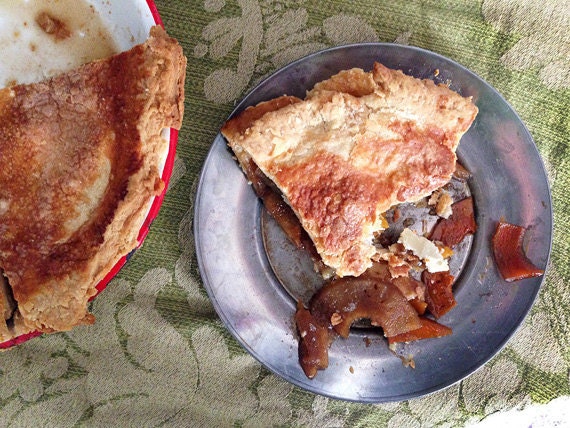 %3Cp%3E%3Ca%20href%3D%22http%3A%2F%2Fwww.fourpoundsflour.com%2F%22%20target%3D%22_blank%22%3ESarah%20Lohman%3C%2Fa%3E%3C%2Fp%3E
%3Cp%3E%3Ca%20href%3D%22http%3A%2F%2Fwww.fourpoundsflour.com%2F%22%20target%3D%22_blank%22%3ESarah%20Lohman%3C%2Fa%3E%3C%2Fp%3E


